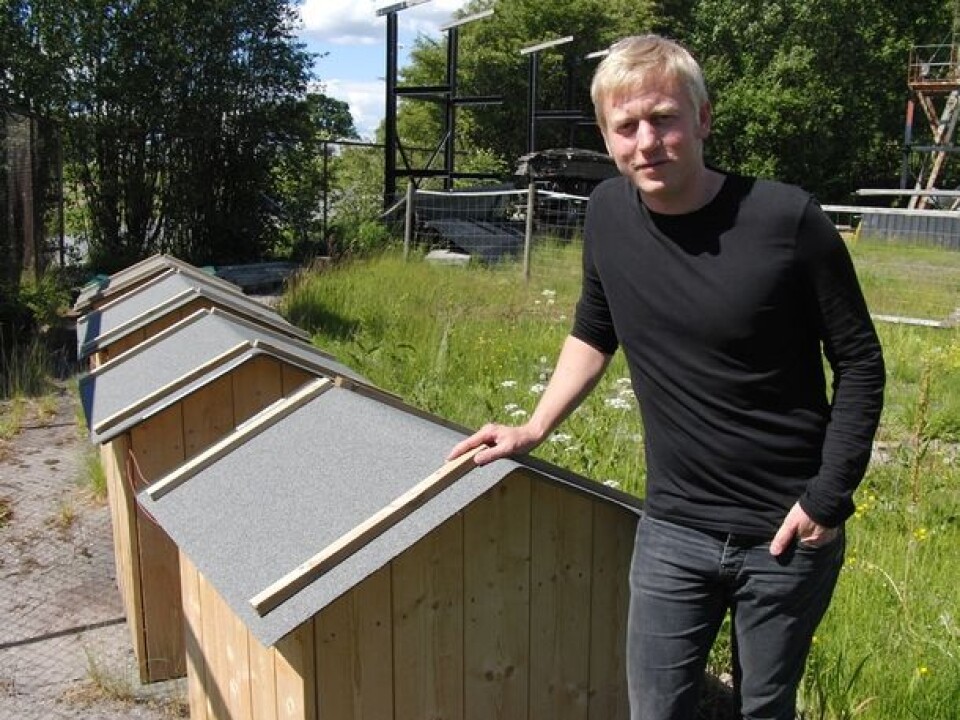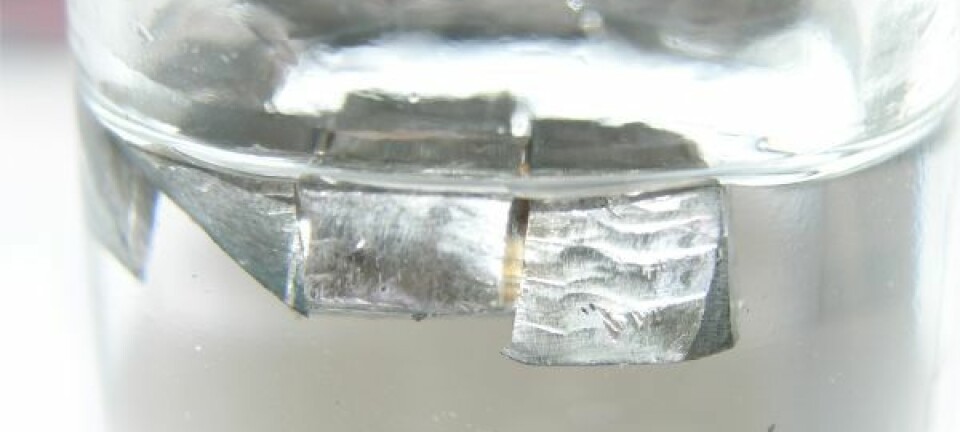
Making fungus come out of the woodwork
Having trouble with fungus destroying your house? The solution might be electrifying.
Denne artikkelen er over ti år gammel og kan inneholde utdatert informasjon.
Keeping fungus off a wooden house usually involves regular treatment with environmentally unfriendly and toxic impregnation, but the future might literally be current.
Researchers at the Norwegian Forest and Landscape Institute are exploring the effects of running current through the woodwork. It seems to keep the fungus away - the only problem is, they can't explain why.
“Direct current has no effect. Alternating current has no effect. But switching between positive and negative voltage at a low frequency stops wood-decaying fungi from growing,” says researcher Andreas Treu.
The method is being tested on a row of picturesque lilliput-houses, exposed to the onslaught of wood-decaying fungus. But not all of the houses are left defenceless: some have been wired up to enable an extremely weak current of a milliampere to circulate in the walls. It's far too weak to pose any health hazard, or indeed any effect at all outside the woodwork.

The current isn't constant: positive and negative pulses are sent through different wires, which then switch to the opposite charge. And the sequence is repeated – again and again.
“We came across this pulse rhythm by chance,” says Treu. “The same type of pulses is used in construction to dry out concrete. One of our partners in this project, Miljøteknologi AS, had noticed how the drying process also reduced biological activity in wooden structures.
“We tested it out on wood, and it worked – including on wood already affected by fungus. But we still don't know why it has this effect,” he says.
Some hypotheses have been suggested, with moisture being one of the suspects.
“The current extracts water from porous concrete," says the researcher. "The same thing happens in woodwork, and might have some impact on fungal growth. However, sufficient moisture remains for the fungus to keep growing – but it still stops.”
Whatever the reason, the method is extremely energy-efficient. With such a weak current, a single solar panel is sufficient to keep the pulses going. And the best part is that the current only runs when it is needed – like when the wood is wet.
“Dry wood doesn't conduct electricity, and it doesn't attract fungus. So no fungus, no current – and hardly any wasted electricity.”
The wires contain conducting polymers rather than metal, which would have reacted with charged particles in the woodwork and discoloured the wood, as well as degraded the electrodes.
Testing on the small houses will carry on over the next three years to measure the effect. If the method proves successful, it could be used in a range of areas – such as making conducting paint to fungus-proof houses, or for the treatment of buildings already fungus-infected.
Stave churches and other listed buildings could be fungus-proofed – and even the Viking ships on display in Oslo could benefit.
“In order to conserve them they were originally treated with coatings which over time have degraded the wood. Perhaps current pulses could extract these harmful substances,” Treu suggests.
Read the article in Norwegian at forskning.no





































